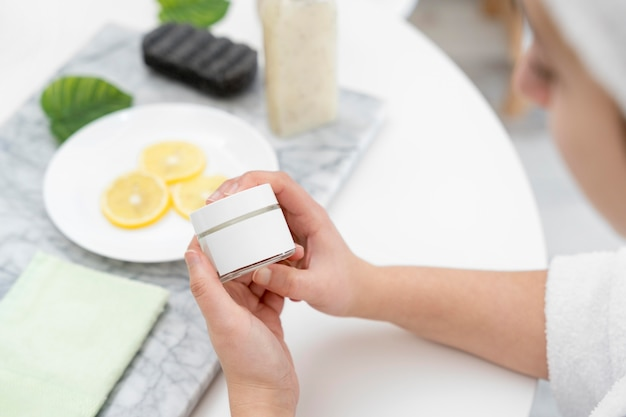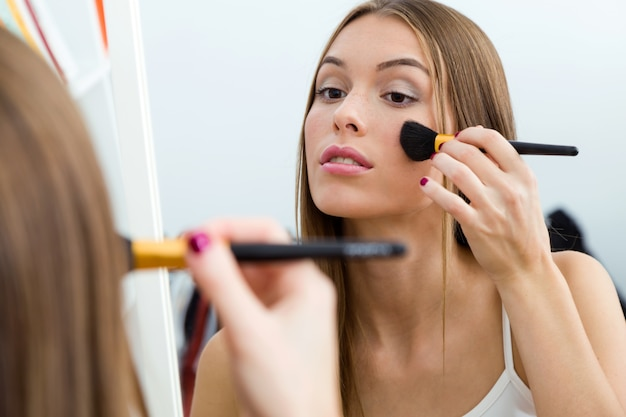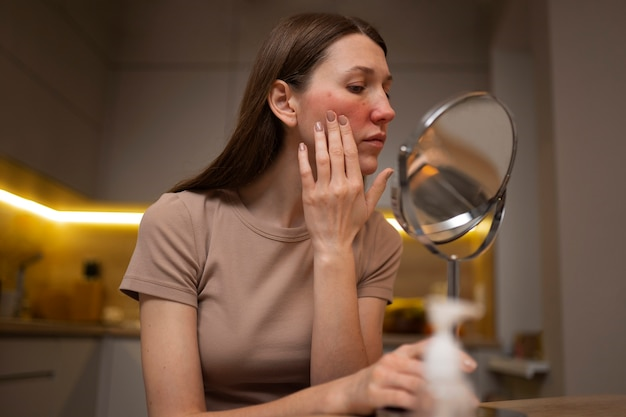Decoding Skincare Labels: Understanding Ingredients and Product Claims
In the vast and ever-evolving world of skincare, deciphering product labels and understanding the plethora of ingredients and claims can often feel like navigating a complex labyrinth. From rejuvenating serums to age-defying moisturizers, the beauty industry bombards consumers with an array of promises, each claiming to be the ultimate solution to flawless skin. However, without a proper understanding of skincare labels and the terminology used, making informed choices becomes a daunting task. In this guide, we will delve into the art of decoding skincare labels, shedding light on the importance of understanding ingredients and product claims. By the end of this journey, you will be equipped with the knowledge to discern hype from efficacy, enabling you to choose skincare products that truly cater to your needs.

Skincare Labels
Before delving into the nitty-gritty of skincare labels, let’s start by understanding the basics. Skincare labels serve as windows into a product’s formulation, revealing essential information such as the list of ingredients and product claims. The key to deciphering these labels lies in familiarizing yourself with the terminology commonly used in the beauty industry.
Understanding Skincare Ingredients
Now that we have familiarized ourselves with skincare label terminology, let’s delve deeper into understanding the ingredients that make these products potent and effective.
Active Ingredients
Skincare formulations are designed around active ingredients, which are scientifically proven to address specific skin concerns. It’s essential to recognize these ingredients to gauge the efficacy of a product. Here are some common active ingredients and their benefits:
Hyaluronic Acid: Known for its excellent hydrating properties, hyaluronic acid attracts and retains moisture, plumping the skin and reducing the appearance of fine lines.
Retinol: A derivative of Vitamin A, retinol is a powerhouse ingredient for combating signs of aging, stimulating collagen production, and promoting cell turnover.
Niacinamide: This multitasking ingredient helps regulate sebum production, reduce inflammation, and improve the overall texture of the skin.
Potential Allergens and Irritants
While many skincare ingredients boast impressive benefits, some individuals may experience adverse reactions to certain compounds. Common allergens and irritants include fragrance, alcohol, and specific essential oils. If you have sensitive skin, it’s crucial to scan the ingredients list for potential triggers.
Decoding Beauty Product Labels
With an understanding of ingredients, let’s now shift our focus to the intriguing world of product claims. Skincare labels are often adorned with enticing promises that tempt us into believing our skin woes will disappear with just a single application.
Recognizing Misleading Claims
Unfortunately, not all product claims hold water, and some may be downright misleading. Watch out for vague claims that promise miracles or results that seem too good to be true. Look for products backed by clinical studies and evidence.
Regulation of Product Claims
Regulatory bodies, such as the Food and Drug Administration (FDA) in the United States, monitor skincare product claims to ensure they are accurate and not deceptive. However, the regulations may vary from country to country. Be cautious of products that overstate their abilities without credible evidence.
Ingredient Analysis in Skincare
Ingredient analysis is an essential step in making informed skincare choices. Let’s delve into ways to conduct ingredient analysis to ensure you invest in products that genuinely deliver on their promises.
-
- Research and Education
-
- Patch Testing
-
- Seek Professional Advice
Analyzing Product Claims
Analyzing product claims is a crucial skill that helps you identify effective products amidst the sea of marketing hype. With a discerning approach, you can separate the truth from mere promises.
Fact-Checking Claims
Don’t take product claims at face value. Fact-check claims by researching the ingredients and examining scientific evidence that supports the promised benefits.
Look for Clinical Trials and Studies
Products that have undergone clinical trials and studies are more likely to deliver on their claims. Seek out evidence-backed skincare options to make the most of your investment.
Skincare Label Guidelines
As consumers, it’s essential to navigate skincare labels with a discerning eye. By following these guidelines, you can make well-informed decisions and select products that truly cater to your skin’s needs.
Know Your Skin Type and Concerns
Understand your skin type and specific concerns, whether it’s dryness, acne, sensitivity, or aging. Tailor your product selection to address these concerns effectively.
Patch Test New Products
Before incorporating a new product into your skincare routine, perform a patch test. This simple step helps identify potential allergic reactions or irritations.
Seek Professional Advice
If you find skincare labels overwhelming, seek guidance from a dermatologist or skincare expert. They can recommend products tailored to your individual needs and offer valuable insights.
Reading Skincare Ingredients
The foundation of understanding any skincare product lies in the ability to read and comprehend its ingredients. Skincare labels are often filled with a long list of scientific-sounding names, making it overwhelming for the average consumer. However, the key to unlocking this knowledge is to start with the basics.
Breaking Down the Ingredients List
The ingredients list on a skincare product label is usually arranged in descending order, with the most prominent ingredients listed first. Familiarizing yourself with common skincare ingredients like water, glycerin, and various oils can be helpful in recognizing them at a glance.
Understanding the Terminology
In reading skincare ingredients, one may come across terms such as ‘parabens,’ ‘sulfates,’ and ‘fragrances.’ It is essential to understand the meaning of these terms and the potential impact they can have on your skin. This knowledge can help you avoid ingredients that might cause allergies or irritations.
Decoding Product Labels
Skincare product labels are often filled with alluring claims and marketing jargon. To make informed decisions, it is crucial to look beyond the catchy phrases and understand the facts behind the claims.
“Natural” and “Organic” Claims
Labels that boast the terms “natural” and “organic” might seem enticing, but it’s important to verify these claims. Look for certifications from reputable organizations like the USDA Organic or EcoCert to ensure the product meets specific standards.
Hypoallergenic and Dermatologist-Tested
Products labeled as “hypoallergenic” or “dermatologist-tested” may imply safety, but these claims are not regulated by the FDA or other governing bodies. Always perform a patch test to check for individual sensitivities before incorporating a new product into your routine.
Cruelty-Free and Vegan
“Cruelty-free” indicates that a product has not been tested on animals, while “vegan” means it contains no animal-derived ingredients. Look for certifications from organizations like Leaping Bunny or PETA to confirm these claims.
Claims and Ingredients in Beauty Products
Skincare product claims can sometimes be exaggerated or misleading, leading consumers to believe they will achieve miraculous results. Let’s examine some common claims and the ingredients that support them.
Anti-Aging Claims
Products claiming to “reverse aging” often contain powerful ingredients like peptides, antioxidants, and retinoids. While these ingredients can improve skin texture and tone, it’s essential to manage expectations and understand that aging is a natural process that cannot be entirely reversed.
Brightening Claims
Skincare products marketed as “brightening” usually contain ingredients like Vitamin C and alpha hydroxy acids (AHAs). These ingredients can indeed help fade dark spots and promote a radiant complexion.
Acne-Fighting Claims
Products targeting acne-prone skin often contain ingredients such as salicylic acid and benzoyl peroxide, which can effectively combat acne-causing bacteria. However, individual results may vary, and it’s essential to address the root causes of acne through a comprehensive approach.
As we reach the end of our journey in decoding skincare labels and understanding ingredients and product claims, we find ourselves empowered with valuable knowledge. Armed with an understanding of the terminology and the science behind skincare formulations, we are no longer at the mercy of clever marketing tactics or extravagant claims. Instead, we can confidently navigate the aisles of beauty products, knowing how to read between the lines and make well-informed decisions.
Remember, not all product claims are created equal, and not every trendy ingredient is a magical elixir for everyone. Each individual’s skin is unique, and what works wonders for one person may not yield the same results for another. Therefore, take the time to understand your skin’s specific needs and concerns, and seek out products that align with your goals.
By staying educated and discerning while exploring the vast world of skincare, you can embark on a journey towards healthier, happier skin. Let your newfound knowledge empower you to make choices that prioritize your skin’s well-being, as you embrace the beauty of an informed and confident skincare routine. So go forth, armed with the wisdom of decoding skincare labels, and unlock the secrets to radiant, glowing skin – a true reflection of the care and attention you invest in yourself.




